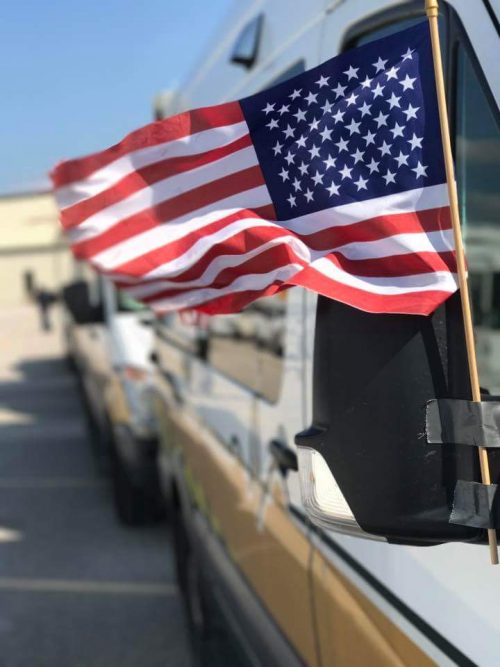
THE ROLE OF EMS IN PREPARING OUR CITIZENS FOR MAJOR INCIDENTS
BY RICHARD HUFF
In the days and weeks after Hurricane Maria slammed Puerto Rico, one of the many narratives that emerged was the need for citizens to be trained in basic first aid and CPR.
Given the damage to infrastructure and the inability for crews to respond to the initial emergency, bystanders were forced to help.
When the severity of flooding in Houston was setting in—and forecasters predicting record rain—the Cajun Navy, a collection of volunteers with boats formed during Hurricane Katrina, began to mobilize. They headed to the region where they helped local EMS providers rescue residents unable to get to safety.
In the aftermath of the deadly mass shooting in Las Vegas, there was a call for more people to learn how to stop life-threatening bleeding before trained professionals get to the scene.
EMS TAKING THE LEAD
EMS providers have an active role in this process. EMS, while on the front lines of a disaster, also has a key part in building community resilience long before a crisis happens. From routine CPR classes to rolling out the “Stop the Bleed” training, EMS is critical in preparing the public to help themselves.
Likewise, EMS often helps through messaging on social media with important information before, during and after a disaster.
“We have to make sure the citizenry is prepared to deal with the first 24 hours until the government can respond,” says Jerry Romero, president of Acadian Ambulance. “A well-equipped, well-trained citizenry can save a lot of lives.”
As part of the response to the Port Arthur, Texas area after Harvey, Acadian providers worked hand-in-hand with the Cajun Navy to rescue people and confirm other homes were cleared.
“With the ‘Stop the Bleed’ campaign, now is the time to start training people,” says Dr. David Persse, Medical Director for the Houston Fire Department. “Tragically, we’re probably able to get people interested.”
As part of this new effort around the country, there’s been growth in training of local Community Emergency Response Teams. And recently, there has been a push for Teen CERT teams.
EDUCATING THE PUBLIC
Former FEMA Administrator Craig Fugate says the public is going to act whether they’re trained or not, so there is a benefit to EMS stepping up and taking a lead on helping the community.
“The public’s a resource, not a liability. From Joplin and a whole host of other traumatic events, the stories you hear of people being saved, it’s very rarely the lights and sirens folks. They’re going to do it whether you’re there or not,” Fugate says.
In fact, it’s important to let the public know the reality of response times and how critical bystanders are in the process, whether it’s after a storm or a mass shooting.
“I think we need to be frank and honest with people, whether it’s a heart attack, a gunshot, or a fall from a ladder, the fastest response is not 9-1-1—it’s the bystander,” Fugate says.
When wrapping up the 2017 hurricane season, FEMA Administrator Brock Long put an emphasis on the part local community responders play in dealing with disasters.
“This historic hurricane season should serve as a gut check and an opportunity for citizens, businesses, state, local, tribal and federal officials to re-evaluate how we prepare for and respond to any disaster,” Long said in a statement. “Response and recovery is dependent upon the whole community to be successful. While we continue to support the recovery from these storms, we must also take the opportunity to become better prepared for future disasters.”
“State, local, tribal and territorial governments, along with the residents in the impacted areas, are the true first responders,” Long added. “FEMA alone cannot deliver assistance to this vast number of survivors. We must hit the reset button on the culture of preparedness in this country.”
